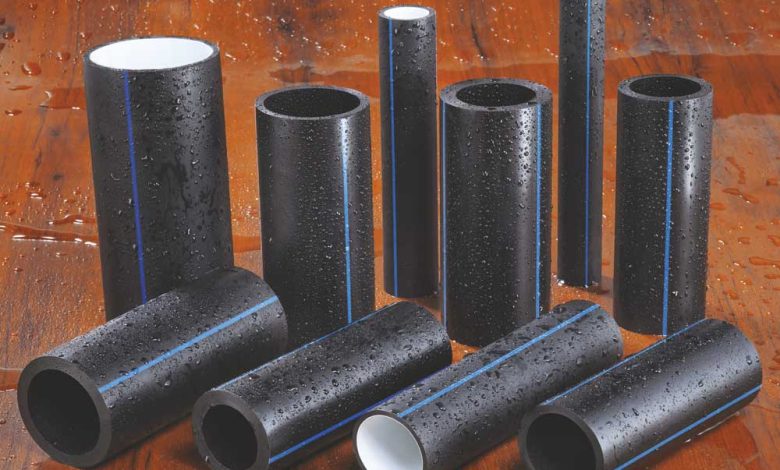Pipes

Plastic pipes are known for their advantages including affordability, faster and more flexible installation, and durability, but do you know the difference between different plastic pipes? What is the best material for water pipes? There are some important factors to consider when determining which pipe and fitting material is best for building or remodeling your home. Your builder, contractor, and local officials are great resources, but knowing some basics will make discussions more productive. cPVC Pipes
Defined PVC, CPVC and PEX PVC
Polyvinyl chloride A plumbing staple since the 1960s, PVC is the most widely used plastic pipe in the plumbing and construction industry. In the US, PVC is made from natural gas and salt (yes, “salt”). Learn more about the history of PVC and how it is made. PVC is corrosion resistant and is widely accepted by building codes for most plumbing applications (except hot water).
CPVC – Chlorinated Poly (Vinyl Chloride) CPVC (chlorinated poly(vinyl chloride) is a strong and rigid thermoplastic material used for hot and cold potable water applications in residential construction. than PVC. Chlorine-based disinfection is used by water companies to kill disease-causing bacteria before the water reaches your home. Depending on your location and time of year, disinfection methods and levels of water systems may vary without notice. CPVC is corrosion resistant.
PEX – Cross-linked polyethylene PEX is a flexible plastic material made from medium or high density polyethylene. PEX piping has been used for decades in hot and cold water distribution and for hydronic radiant heating in Europe. Introduced in the U.S. in the 1980s, PEX was the most commonly used flexible pipe for piping and radiant floor heating applications. Due to its flexibility, it is often a popular choice for renovations as it can easily be tucked into walls.
PEX pipe recognized as acceptable for water distribution by all major plumbing standards. Learn about the PEX manufacturing process.
Tackling a plumbing project can overwhelming. With so many different types of plumbing solutions available, it can be confusing.
Do you need PVC, CPVC or UPVC pipes?
Here are some common plumbing fixtures and what they are used for: PVC Pipes: The most common type of pipe used for housing is PVC. These pipes are ideal for drainage applications (wastewater from sinks, toilets, etc.).
It can also be used for the main water supply because it is strong and stable under high pressure conditions. PVC pipes can be used for both hot and cold water, as PVC pipes do not rot or rust over time, there is no need to replace them often. They are also easy to work with because they do not require welding or metalworking like iron or steel pipes. PVC pipes are ideal for high pressure applications.
PVC pipes can be used for: Drain pipe Main water pipe High pressure applications CPVC pipes: CPVC pipes are made of PVC with the addition of chlorine. CPVC pipes have all the advantages offered by PVC pipes. Because CPVC pipes, like PVC pipes, do not rust or rot, they are safe for transporting potable water. They do not deteriorate even under the influence of hot water. CPVC pipes have a smooth surface which ensures that there is less noise when the water passes through compared to metal pipes. In addition, CPVC pipes are well insulated. Which prevents energy losses in hot or cold applications. Agriculture Pipes manufacturers
Known for its high mechanical strength, corrosion resistance, and ease of installation and maintenance, our CPVC pipes are widely used in a variety of residential and commercial projects.
Hot water Drinking water Hot water Pipeline for transporting waste UPVC pipe:
Also read: PEX – Cross-linked polyethylene PEX
UPVC pipes and fittings are suitable for any type of pipe system
Compared to metal pipes, UPVC pipes have excellent corrosion-resistant properties that make them suitable for transporting potable water. When raw water is transported through metal pipes, it usually turns yellow or reddish. However, there is no problem with UPVC pipes. Because UPVC pipes do not contain lead, they are an effective solution for agricultural pipes.
UPVC pipes
These also used as infusion pipes in many chemical plants because. They are resistant to acids. And alkalis and corrosion. Installation and maintenance costs of UPVC pipes are less compared to metal pipes. No special tools needed for cutting. One-time solvent cement is all that is needed to ensure a 100% watertight joint.
Fittings for various plumbing
As a leading pipe manufacturing company, we ensure that our UPVC pipes designed according to modern industry standards. Tap water Irrigation projects Stormwater projects As a leading plumbing company in India, Skipper Pipes offers PVC, UPVC, and CPVC pipes and fittings for various plumbing applications. The pipes and fittings we manufacture are light and 100% impermeable.
CPVC and water heater, the ideal combination?
There myths associated with plastics. Plastic water pipes often questioned about their suitability for use with hot water. CPVC a specially make thermoplastic. And its molecular structure differs from ordinary plastics. The internal structure makes. It an ideal choice for hot. And cold water pipes. CPVC as a material has a glass transition temperature of 113-115 °C.
temperature
The glass transition temperature defined as the temperature at which a solid begins to soften. And weaken. CPVC manufacturers guarantee a service life of 50 years. For their CPVC pipe fittings when used in hot water up to 93°C. As you already know that a comfortable bath with warm water of 29-43 °C. And a temperature above 65 °C can cause burns. Boilers also intend for heating water above 60-65 °C.
Melting point/glass transition temperature
CPVC becomes an ideal material because the melting point/glass transition temperature of CPVC is much higher than the limiting temperature of the water heater. The pipe can thus serve the user for 50 years. CPVC pipes an ideal choice for hot water pipes. This done after adding the material, which goes through another chlorination process. That gives CPVC a higher quality. The best temperature resistance demonstrated by ASTM standards for any material CPVC does not degrade with exposure to hot water and is readily available for applications requiring up to 200°F.
Energy source
Note: For safe use, please ensure that the boiler components are always in good working order. In case of failure of the water heater thermostat, the energy source continues to heat the water.
Excessive pressure
This leads to an increase in temperature and excessive pressure in the boiler tank, leading to bursting and serious damage. CPVC pipes have use in the US, Middle East, and other countries for 50-60 years without major problems, so you can choose CPVC for hot water pipes at home. It is the inventor of CPVC and has been on the market for over half a century. FlowGuard CPVC used in several countries for hot water applications. Making it a trusted brand for this application. CPVC therefore conforms to international quality. And is suitable for hot water applications. Compare to other generic CPVCs.
Pipe Carcinogenic
Plastic pipe Carcinogenic vinyl chloride can leak from pipes made of polyvinyl chloride or PVC, especially pipes made before 1977. The US Green Building Council says that considering the life cycle of PVC, from production to disposal, the material is clearly more hazardous to health than other types of pipes. Other plastic pipes A type of polyethylene plastic called PEX has become a popular choice for piping. PEX pipe is flexible, strong, and corrosion resistant.




